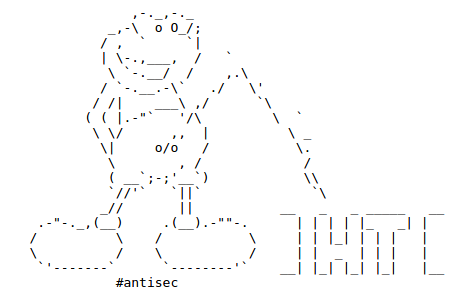You may remember Flash Audit on OPM Infrastructure Update Plan which gave you a summary of the Inspector General for the Office of Personnel Management (OPM) report on OPM’s plans to upgrade its IT structure.
Unfortunately for U.S. taxpayers and people whose records are held by the OPM, the Inspector General doesn’t have veto power over the mis-laid plans of the OPM.
As a consequence, we read today:
Contractor Working on OPM’s Cyber Upgrades Suddenly Quits, Citing ‘Financial Distress” by Jack Moore.
From the post:
The contractor responsible for the hacked Office of Personnel Management’s major IT overhaul is now in financial disarray and no longer working on the project.
OPM awarded the Arlington, Virginia-based Imperatis Corporation a sole-source contract in June 2014 as part of an initial $20 million effort to harden OPM’s cyber defenses, after agency officials discovered an intrusion into the agency’s network.
In the past week, however, Imperatis ceased operations on the contract, citing “financial distress,” an OPM spokesman confirmed to Nextgov.
After Imperatis employees failed to show up for work May 9, OPM terminated Imperatis’ contract for nonperformance and defaulting on its contract.
“DHS and OPM are currently assessing the operational effect of the situation and expect there to be very little impact on current OPM operations,” OPM spokesman Sam Schumach said in a statement to Nextgov. Schumach said OPM had been planning for performance on the contract to end in June 2016.
…
Show of hands: Who is surprised by this news?
The Board of Directors/Advisors page for Imperatis is now blank.
To help you avoid becoming entangled with these individuals in future contacts, the Wayback Machine has a copy of their Board of Directors/Advisors as of March 31, 2016.
So you can identify the right people:
Board of Directors
CHARLES R. HENRY, CHAIRMAN OF THE BOARD
Retired Major General Charles (Chuck) Henry became Chairman of the Board of Directors in early 2013. Henry retired after 32 years in the U.S. Army, during which he held various important Quartermaster, mission-related, command, and staff positions. He was the Army’s first Competition Advocate General and reported directly to the Secretary of the Army. His overseas assignments included tours of duty in Vietnam, Europe, and Saudi Arabia. Henry is a member of the Army Quartermaster and Defense Logistics Agency Halls of Fame. In his last position with the federal government, he was the founder and first commander of the Defense Contract Management Command (DCMC).
Henry spent 20 years as a senior executive working in industry, serving as the CEO of five companies. He currently sits on two public boards, Molycorp (NYSE) and Gaming Partners International Corp (NASDAQ), and also sits on the Army Science Board, an advisory committee that makes recommendations on scientific and technological concerns to the U.S. Army.
SALLY DONNELLY
Sally Donnelly is founder and CEO of SBD Advisors, an international consulting and communications firm. Donnelly is also a senior advisor and North American representative to C5, a UK-based investment fund in safety and security markets.
Prior to founding SBD Advisors, Donnelly served as head of Washington’s office for U.S. Central Command. Donnelly was a key advisor to General Jim Mattis on policy issues, Congressional relations, communications, and engagements with foreign governments. Before joining U.S. Central Command, Donnelly was a Special Assistant to the Chairman of the Joint Chiefs of Staff, Admiral Mike Mullen.
Before joining the Chairman’s staff, Donnelly worked at Time Magazine for 21 years. Donnelly currently sits on the Board of the American Friends of Black Stork, a British-based military veterans’ charity and is a consultant to the Pentagon’s Defense Business Board.
ERIC T. OLSON
Retired Admiral Eric T. Olson joined the Imperatis Board in April 2013. Olson retired from the U.S. Navy in 2011 after more than 38 years of military service. He was the first Navy SEAL officer to be promoted to the three-star and four-star ranks. He served as head of the US Special Operations Command, where he was responsible for the mission readiness of all U.S. Army, Navy, Air Force, and Marine Corps Special Operations Forces.
Olson is now an independent national security consultant for private and public sector organizations as the president of the ETO Group. He is an adjunct professor in the School of International and Public Affairs at Columbia University and serves as director of Iridium Communications, Under Armour, the non-profit Special Operations Warrior Foundation, and the National Navy UDT-SEAL Museum.
MASTIN M. ROBESON
Retired Major General Mastin Robeson joined Imperatis as President and Chief Executive Officer in March 2013. Robeson retired in February 2010 after 34 years of active service in the U.S. Marine Corps, during which time he served in more than 60 countries. He commanded a Combined/Joint Task Force in the Horn of Africa, two Marine Brigades, two Marine Divisions, and Marine Corps Special Operations Command. He also served as Secretary of Defense William Cohen’s Military Assistant and General David Petraeus’ Director of Strategy, Plans, and Assessments. He has extensive strategic planning, decision-making, and crisis management experience.
Since retiring in 2010, Robeson has operated his own consulting company, assisting more than 20 companies in business development, marketing strategy, strategic planning, executive leadership, and crisis management. He has also served on three Boards of Directors, two Boards of Advisors, a college Board of Trustees, and a major hospital’s Operations Council.
BOARD OF ADVISORS
JAMES CLUCK
James (Jim) Cluck joined the Imperatis Board of Advisors in 2013. Cluck formerly served as acquisition executive, U.S. Special Operations Command. He was responsible for all special operations forces research, development, acquisition, procurement, and logistics.
Cluck held a variety of positions at USSOCOM, including program manager for both intelligence systems and C4I automation systems; Deputy Program Executive Officer for Intelligence and Information Systems; Director of Management for the Special Operations Acquisition and Logistics Center; and Chief Information Officer and Director for the Center for Networks and Communications. During these assignments, he consolidated diverse intelligence, command and control, and information programs through common migration and technical management techniques to minimize Major Force Program-11 resourcing and enhance interoperability.
ED WINTERS
Retired Rear Admiral Ed Winters joined the Imperatis Board of Advisors in September 2014. Winters retired from the U.S. Navy after more than 33 years of military service. As a Navy SEAL, he commanded at every level in the Naval Special Warfare community as well as serving two tours in Iraq under the Multi-National Security Transition Command (MNSTC-I). During his first tour with MNSTC-I he led the successful efforts to establish the Iraqi National Counter-Terrorism Task Force. During his second tour with MNSTC-I he served as Deputy Commander, overseeing the daily training and mentoring of the Iraqi Security Architecture and Government institutions. Since retiring, Winters has consulted to multiple corporations.
Should any of these individuals appear in any relationship with any contractor on a present or future contract, run the other way. Dig in your heels and refuse to sign any checks, contracts, etc.
Imperatis Corporation was once known as Jorge Scientific, which also crashed and burned. You can find their “leadership team” at the Wayback Machine as well.
You have to wonder how many Imperatis and Jorge Scientific “leaders” are involved in other government contracts.
Suggestions for a good starting place to root them out?







